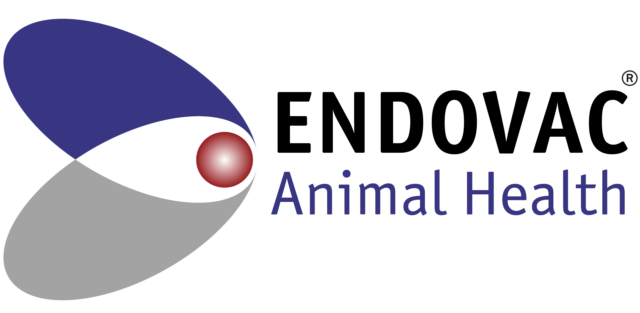Editor's note: This is the second installment in a series summarizing the author’s master's project with the Ontario Veterinary College and the Lang School of Business.
Like many Canadians, I am a hockey fan. My team did not come close to winning the Stanley Cup, but I did enjoy watching Conner McDavid compete in the finals. His journey reminds me of many dairy farms. Conner is the best hockey player in the world, but that's not enough to guarantee he will win a championship. He needs a solid team around him – defence, goalies, coaches – to win it all. Who do you have on the bench to help your farm business be more successful?
In a previous article, we discussed how you are your farm's chief operating officer (CEO) by default. Even if you are an excellent “cow person,” you must also understand agronomy, bookkeeping, human resources and economics. We shared details on courses available on farm business management, but many producers will ask their current advisers for help first.
In the national anonymous survey referenced in the previous article, we asked dairy producers, “If you needed to learn more about a specific area, where would you look first?” While some would talk to other producers (10.5%) or use the internet (15%), the majority (67%) would ask their current advisers for help (Figure 1).

Current advisory landscape
The producer survey results reflect the high level of trust they have for advisers such as veterinarians, nutritionists (production advisers), accountants and lenders (financial advisers). Part of the reason for using advisers is to gain skills you can use, but they can also help find areas you are missing. We can all become blind to things we see daily, aptly called “barn blind.”
In clinical veterinary practice, most of my time was focused on herd health, or so-called “rectal tourism.” Producers relied on me to help ensure cows got pregnant promptly. Many farms asked for input on other areas, but some just wanted pregnancies diagnosed quickly (three farms used stopwatches). I rarely saw cows away from the lockups and seldom viewed dry cows housed at other facilities. Over time, I became barn blind to things not on today’s list.
In 2015, I joined a national pharmaceutical company as a technical adviser. My job was to travel across Canada and help producers improve fresh cow transition health. We would bring the herd veterinarian, nutritionist and producer together to cover everything related to transition. My bias from clinical practice was that veterinarians were always great teammates. In my new role, I learned that feed advisers sometimes felt differently. To quote one British Columbia dairy farmer, “I don’t think they [our vets and feed advisers] like each other much.”
How your cows handle transition is a perfect example of how your advisers overlap. Consider this: If reproduction is suffering, cows will have long days in milk and may become overweight. Overweight cows have poor transitions. This can lead to an increase in displaced abomasums (DAs). The situation may improve on its own but can be sped up (and possibly avoided) with better team action and communication. Expanding this further, what if some of the transition issues are related to overcrowding? If you wanted to expand your facilities, who would help communicate the economic impact of new construction to your lender?
Our research group was interested in learning more about how Canadian advisers currently interact with producers and each other. We conducted an anonymous survey via various trade associations, and 100 veterinarians, nutritionists, accountants, lenders and other farm advisers participated. We found that production advisers and financial advisers frequently interact within their own groups on behalf of farms (i.e., vet to feed), but they rarely interact across groups (i.e., vet to banker). Figure 2 uses a diagram to summarize the interactions between groups.

What can we learn from other countries?
In the 1990s, Pennsylvania State University and the Center for Dairy Excellence (CDE) introduced the idea of formal advisory groups called Dairy Advisory Teams (DATs). They connected the root word for “team” (teme: a group of draft animals pulling in unison) to a group of advisers pulling together for a common goal. DATs promote multidisciplinary collaboration by inviting the farm's advisers to in-person quarterly meetings.
As part of our research, one of CDE's business advisers invited me to attend six quarterly meetings in Ohio. Participating farms ranged in size from 120 cows to 700. Each meeting was attended by the veterinarian, nutritionist, lender, herd managers and family. The business adviser coordinated updates from the bookkeeper and acted as the meeting facilitator. The primary goal was to help producers understand their financial position and to identify steps to improve efficiency and profitability. Having family members present allowed them to become more familiar with how production and financials are linked.
The advisers shared that DATs help keep everyone focused, improving project completion. They also found that succession planning became easier since family members were accustomed to discussing management and finances. Advisers cautioned, “Egos need to be checked at the door, and the entire focus needs to be on moving the dairy operation forward.”
Finally, one producer said, “My vet recommended that I consider this model. My inconsistent cash flow was stressing me out. I did not understand my finances and felt out of control. Working with this group has helped make my numbers clearer, and now I feel more in control. I wouldn't be farming today if I hadn't started using this.”
Could DATs work in Canada?
In our Canadian surveys, 8% of advisers said they are involved in some form of roundtable meeting with their producers and other advisers at least once annually. The American DATs aim to meet quarterly, which may be more than necessary for most Canadian herds. I have asked various producers for their thoughts, and most of them felt that meeting every four to six months would help keep projects on task without allowing for the loss of momentum. The biggest reservation they shared was regarding the financial investment. All felt there would be a return on their investment, but they said they would need help quantifying this. Regarding whom should pay to support processes such as DATs, 74% of producers in our survey felt that the farm should be responsible (Figure 3).

Who is on your hockey team?
If we consider your farm a hockey team, you are Conner McDavid. You are responsible for doing the heavy work of production. Relying on your advisers as a team will make your position as the CEO more successful. Scoring goals is great, but our ultimate aim is to win the Stanley Cup of long-term financial success.
In the next article, we will discuss how your advisers can connect metrics for production with profitability.
References omitted but available upon request by sending an email to an editor.









